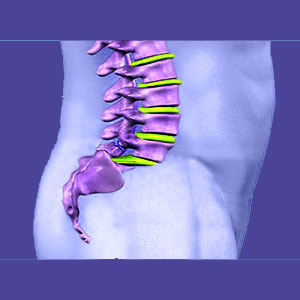
Lower back surgery is always a risk, but since most operations have curative intentions, this therapeutic path might allow patients to break away from symptom-based care. We are harsh critics of spinal surgery, especially in the lumbar region. Our criticism is not based on our treatment preferences or ideology (although these also make us wary of surgery), but instead is based simply on the abysmal outcomes offered by most procedures and for most diagnoses. There are exceptions to this rule, as well as many ways of improving the chances of achieving a successful result from back surgery.
The goal of this resource section is primarily to provide a detailed look at the various types of lumbar surgical interventions that are available. Additionally, we will look at why lumbar surgery fails so often, when it usually succeeds and how every patient can stack the odds for a satisfying outcome in their favor. If you are considering lumbar spinal surgery now or in the future, know someone who is contemplating surgery or have already had a lower back operation, this resource section is perfectly suited for all your research needs.
Lumbar Spine Surgery Benefits
The overwhelming majority of lumbar surgeries are designed to act as curative care practices. This means that they seek to resolve the underlying cause of pain by altering spinal structure. In concept, this is an excellent characteristic of any treatment, since it allows the patient to be free from ongoing cost and burden of symptomatic therapy. However, in order for this benefit to be realized, the procedure must be successful.
Spinal surgery is almost always covered by all major forms of health insurance. Additionally, all the nursing and rehabilitative measures need postoperatively are also almost universally covered. This benefit really helps patients to focus on their treatment and recuperation, rather than the financial consequences of their therapy.
For some diagnoses, surgery works better than for others. Some of the most successful forms of lumbar spinal surgery at aimed at central and foraminal spinal stenosis, coccydynia and facet syndrome enacted by visualized osteophytes. Best of all, these diagnoses can virtually always be treated using minimally invasive practices, for reduced collateral damage to healthy spinal structures.
In order to increase the chances for a positive surgical result, be certain to verify the accuracy of the diagnosis before even considering invasive care. Get more than one opinion on the best path to treatment and be sure to tell every doctor that you want to avoid surgery or only undergo minimally invasive care if at all possible. All of these factors will help you to decrease the chances of being victimized by various negative factors of the lumbar surgical process.
Lower Back Surgery Risks
All surgical endeavors demonstrate significant health risks. General risk factors include anesthetic-related complications, continued bleeding, infection, nerve damage, implant or hardware-related complications (where applicable), as well as the possibility for stroke, heart attack, injury or death. Specific risks of most spinal surgeries include the changes for accelerated spinal degeneration around non-operated levels of the backbone, the chance for continuing pain postoperatively and of course, the very high percentage of surgeries that simply fail.
Statistically, the most commonly used and least successful surgical techniques are those which target the lumbar intervertebral discs. Between the gross misdiagnosis of many disc-related pain syndromes, the continuing progression of intervertebral degeneration and the very common occurrence of postoperative herniation or re-herniation, disc operations fare terribly for providing cures over timelines of 7 years.
Other common surgical failures include any and all implant and hardware-assisted techniques, including artificial disc implantation, spinal fusion and corpectomy. The latter 2 procedures are also terrible to endure and demonstrate many additional risk factors that contraindicate them for all but extremely specific uses in our opinion.
Lower Back Surgery Techniques
Lumbar spine surgery encompasses mostly disc and bone techniques, as well as procedures that treat the ligaments, nerves and lower spinal cord.
In the following list, we examine various techniques and considerations of the larger lumbar spinal surgery sector. As each new essay is published, it will be added below to help you to learn more about your many procedural options:
Minimally invasive low back surgery is always the best treatment path for patients who must undergo invasive care.
Lower back surgery risks are significant and are detailed vividly in this cautionary essay.
Lumbar discectomy is the most common of all lumbar operations and the one which provides the very worst statistical outcomes. Anterior lumbar discectomy utilizes incisions in the front and/or side of the body, which is an advantageous technique over dorsally-placed incisions.
Lumbar disc replacement replaces herniated or degenerated intervertebral tissues with synthetic substitutes to maintain natural spinal functionality.
The X-Stop spinal implant and the Coflex spinal implant are both used in the surgical treatment of lumbar spinal stenosis, but have some crucial differences which differentiate them.
Lumbar foraminotomy seeks to enlarge the foraminal openings to treat suspected pinched nerve roots in the lower back.
Lumbar kyphoplasty and vertebroplasty are both approaches to fracture repair utilizing innovative surgical practices.
Lumbar laminectomy is a very versatile surgical technique that can accomplish many objectives, including treating all types of stenosis, disc problems, and any other condition that affects in the interior of the spinal canal.
Lumbar neurotomy is not a curative practice, but instead qualifies as surgical symptomatic treatment, unless the nerve is completely disabled, in which case pain relief might be permanent. Lumbar rhizotomy is a specific type of nerve ablation used to treat certain types of nerve pain in the lower back.
Lumbar nucleoplasty and lumbar IDET are minimally invasive disc-targeting practices that often demonstrate better results than discectomy, with less trauma to the spine.
Lumbar corpectomy removes one or more entire vertebral bodies and must then reconstruct a large area of the spine using fusion or fusion combined with a spinal implant.
Lumbar spondylodesis, also known as spinal fusion, is one of the most widely used surgical techniques, one of the least necessary surgical techniques and in our opinion, the single greatest ideological failure of the orthopedic dorsalgia treatment industry.
Coccyx surgery usually removes the entire skeletal structure as a treatment for chronic tailbone pain. Success rate is generally good and risks are minimal compared to other lower back surgical interventions.
Failed lumbar spine surgery is the single greatest risk every patient takes when they go under the knife. Failed surgery is an epidemic problem that affects millions of people with intractable lower back pain. Remember, medical science might deem a procedure to be successful if it accomplishes the structural aspect of the surgical objective, but isn’t it more important to rate a procedure based on its ability to actually relieve pain? Surgeons don’t think so. If they did, the majority of all surgeries would be deemed dismal failures…
We have helped many patients to avoid spinal surgery with our proven Cure Back Pain Forever Program. You can use the program at home and access it 24 hours a day to get help fast.
Lower Back Pain > Lower Back Surgery






